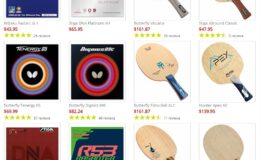Taking Care of Your Table Tennis Rubber
Table tennis rubber is one of the biggest investments players make in the sport. A new sheet of rubber,
right out of the package, is beautiful and clean and fresh. As soon as you play with it – in no time at all – dirt,
oil, dust, grime, nicks, and dead spots find their way onto your originally pristine rubber. Without proper
cleaning and care, your rubber will get old quickly. So it is a good idea, both performance-wise and budgetwise,
to do everything you can to prolong the life of your rubber.
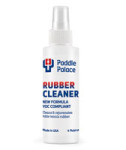 |
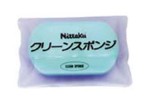 |
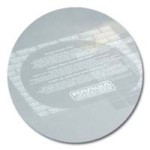 |
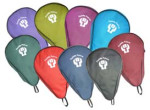 |
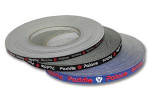 |
Clean your rubber!
Dirty rubber will cause the surface to be less tacky and spinny. It will also play inconsistently due to the
surface of some areas being different from others. This results in a lack of touch. When you see players
breathe on the racket and wipe it with their hands, usually it is because they have noticed their rubber
has a deader spot, or they are ensuring against it. Although in a pinch it is tempting to clean your rubber
in this way, it is not recommended! The less you touch the surface of your rubber with your fingers,
the longer it will last.
It is best to use a cleaner that is specifically made for table tennis rubber. People sometimes ask if
it is ok to use household detergent. We advise against this, because these often have chemical elements
that can leave unwanted residue on your rubber, can cause it to deteriorate it too quickly,
and/or it can have solvents that will fail a racket test.
Using plain water is a safe option. However, water will not remove some oils from your rubber. It
does not give the desired back-to-newer-condition that rubber cleaner does.
Spray one or two sprays of cleaner on one rubber, then wipe it with a sponge or lint-free cloth.
Most kitchen sponges won’t do because they leave bits of sponge on your rubber, and many towels
are too abrasive or leave pieces of lint. For this reason, we recommend a table tennis sponge.
Players here like the Nittaku Clean Sponge because it is good quality, small, dense, and has just
the right amount of absorbancy. It also comes in a clear soft plastic case that keeps it clean between
uses. Many people like bigger, fluffier sponges like the Tibhar Combi Sponge. Use one side
of a sponge to spread the cleaner on the rubber, and the other side to wipe off excess cleaner
in long straight strokes.
When should you clean your rubber? Always clean it at the end of each playing session. Also
clean it any time it seems dirty or you notice decreased or inconsistent performance.
Cover your rubber in plastic!
As soon as you open a new rubber sheet, when it is no longer covered in the plastic
package, it starts to lose its newness. Even new and unused paddles will deteriorate over
time. When rubber is covered in plastic, it stays new much longer. The plastic protects the
rubber surface from air and elements, and keeps it from inadvertently rubbing up against
anything, including your paddle case.
Our favorite plastic covering is adhesive rubber protectors, like the Nittaku Adhesive
Rubber Protector, or Donic Formula Protection Sheets, or DHS Adhesive Rubber Protectors.
We like adhesive protection sheets because they actually stick to the rubber. No air
gets to the rubber and the sheet stays on. Protection sheets come in squares. You can
cut it to fit the size of your rubber, or cut it slightly bigger than your rubber, or leave it
in squares as long as it fits in your paddle case.
Keep your paddle in a case!
After you clean your rubber and cover it in plastic, then put it in a paddle case.
Cases provide padding and protection, they keep the paddle out of direct sunlight,
and they help keep it clean. The best case is one that is roomy enough to insert and
remove your paddle without the rubber being rubbed against the case. We also
recommend using a case with an opening that allows you to insert and remove
the paddle by the handle so that it is not necessary to touch the rubber.
Keep your paddle at room temperature and away from sunlight. Do not leave
rubber sheets or your paddle in a hot car.
Use edge tape!
Edge tape around the edge of your paddle makes a signifi cant diff erence in the
number of nicks and splits on your blade edge and it helps keep your rubber edges
from chipping. Our pros at Paddle Palace prefer edge tape that covers some or all
of the rubber in addition to the blade edge.
Eventually you will need to change your rubber or get a new paddle. But if you
take care of it, your rubber will last a whole lot longer!




